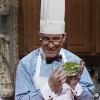-
Welcome to the eG Forums, a service of the eGullet Society for Culinary Arts & Letters. The Society is a 501(c)3 not-for-profit organization dedicated to the advancement of the culinary arts. These advertising-free forums are provided free of charge through donations from Society members. Anyone may read the forums, but to post you must create a free account.
Standardizing Range Temperatures and Language
-
Similar Content
-
- 10 replies
- 3,101 views
-
- 27 replies
- 1,235 views
-
- 7 replies
- 4,101 views
-
- 31 replies
- 6,238 views
-
- 23 replies
- 10,489 views
-
-
Recently Browsing 0 members
- No registered users viewing this page.







Recommended Posts